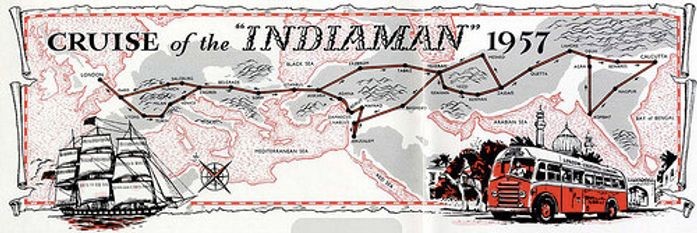According to Wikipedia, the Hippie Trail is the name given to the overland journey from Europe to India and Nepal taken by travelers between the mid-1950s and the late 1970s.
Some weeks ago, a friend phoned to let me know that she was watching a webinar “about the road you wrote about in your memoir.” Though I was unable to join the online event, I did order and read the book written by the presenter, Sharif Gemie, a historian of contemporary culture.

Based on interviews and self-published works, The Hippie Trail, A History by Sharif Gemie and Brian Ireland, is described as the first history of the Hippie Trail. “It records the joys and pains of budget travel to Kathmandu, India, and Afghanistan . . . in the 1960s and 1970s.” Dense with facts and analysis of trends, this book was fascinating in spite of its academic style. Many of the quotes, taken from oral histories and personal memoirs, reminded me of my own days on the trail.
One of the key elements of the trail was the idea of travelling as cheaply as possible. For Tom and me that meant a budget of $10 a day to include everything from food to gas to car repairs to souvenirs. We never stayed in a hotel and almost always cooked and ate in our van.
For many, cheap travel meant taking local transportation or hitch-hiking. Others paid for a ticket on one of the overland bus tours that plied the route. These companies (like Indiaman and Penn Overland) provided basic transportation along a planned itinerary. Sleeping arrangements ranged from reclining seats to tents, from bunks in the bus to scheduled stops at third-rate hotels and guest houses. As the authors state in The Hippie Trail, the trip was often an “epic struggle concerned {with} the maintenance of an aging coach across thousands of miles of rough roads, dodgy towns, dangerous mountain passes, and barren deserts.” These overland bus trips usually took about a month to get from Istanbul to Kathmandu.
Many independent travelers, like Tom and me (see my memoir at https://www.amazon.com/Wherever-Road-Leads-Memoir-Travel/dp/1734279648), drove their own vehicles, mainly Land Rovers or VW vans, all the way to India and back. In spite of the ever-present possibility of mechanical problems, this mode of travel allowed for more personal control, flexibility, and comfort.
What kind of travelers chose this exotic adventure? My memories match the research presented by Gemie and Ireland. We came mainly from England, North America, and Australia, but there were also travelers from throughout western Europe, especially Scandinavia, France, and Germany. We were mostly young. Tom and I, in our late twenties, were older than most. But we sometimes encountered older couples and families like our Danish friends who were in their middle years with teenage children.
Many of the youthful travelers were iconic hippies with long hair, fringes, and beads. They searched for drugs, enlightenment, and free love on the beaches of Goa. Travelers like us simply wanted to see the world and experience different cultures. We took great pains to not look like hippies, especially at border crossings. One thing I believe we all had in common was a desire to experience places and people in a more intimate way than standard tourism allowed. There were even a few true adventurers, like the Kunst brothers who walked around the world with a mule.
The heyday of the Hippie Trail occurred at a time when many young people were turned-off by the traditional life-style modeled by their parents. It also coincided with the Vietnam war when anti-war politics were rampant. And it was war that ended safe and easy access to the trail. In 1979, the Hippie Trail received a double-whammy: the Soviet invasion of Afghanistan and the Iranian Revolution. Since then, there has not been a time when the entire length of the trail, from Istanbul to India, has been safe.
Those of us who were lucky to travel the trail and see Eastern cultures up close, almost always came home with more inclusive ideas, totally changed by our experiences. And many became travel addicts like myself.
Did you or anyone you know travel the Hippie Trail between 1955 and 1979? If so, I’d love to hear from you. Please contact me and share your story.
To learn more:
- The Hippie Trail: a History, by Dr. Sharif Gamie and Dr. Brian Ireland. https://www.amazon.com/Hippie-Trail-History-Sharif-Gemie/dp/1526114623
- YouTube.com: search “Hippie Trail” for several interesting videos.
Sign up to receive the latest news, events and personal insights from Katie Lang‑Slattery.

Leave a Reply